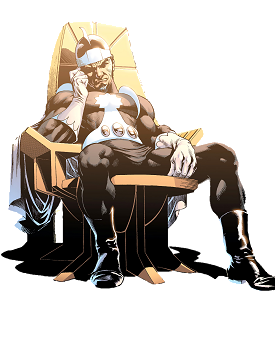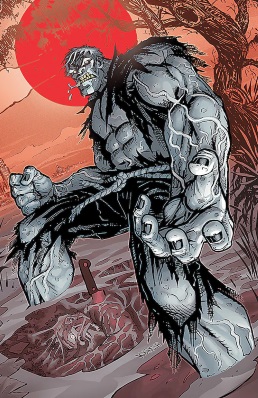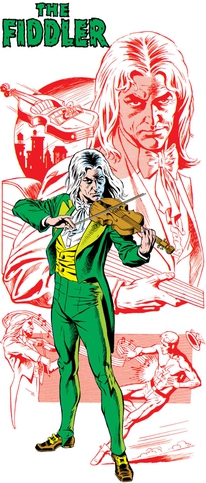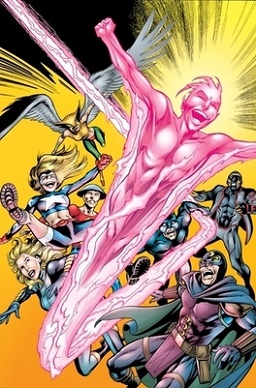Related Research Articles

Hawk and Dove are a superhero team appearing in American comic books published by DC Comics. Created by Steve Ditko and Steve Skeates, they appeared in Showcase #75 during the Silver Age of Comic Books. The duo has existed in multiple incarnations over the years across several eponymous ongoing series and miniseries, and has also appeared in a number of recurring roles and guest appearances in titles such as Teen Titans, Birds of Prey, and Brightest Day. The duo originated as teenage brothers Hank Hall as Hawk and Don Hall as Dove. Following Don's death in Crisis on Infinite Earths (1985), Dawn Granger assumed the role of Dove in Hawk & Dove #1. The mantle of Hawk would later be taken up by Dawn's sister Holly Granger in 2003 after Hank was killed during 1994's Zero Hour: Crisis in Time! until her death and Hank's resurrection in Blackest Night (2009). An unrelated team consisting of military cadet Sasha Martens as Hawk and rock musician Wiley Wolverman as Dove also appeared as the focus of a 1997 miniseries. The pairing of Hank and Dawn serve as the current and most commonly published incarnation of the team.
The Injustice Society is a group of supervillains in the DC Comics Universe. They are the main antagonists of the Justice Society of America.

Doctor Light is the name of two characters appearing in media published by DC Comics: supervillain Arthur Light and superhero Jacob Finlay.

Jade is a superhero in the DC Comics Universe. She first appeared in All-Star Squadron #25 in September 1983. She is the daughter of Alan Scott and Rose Canton and twin sister of Obsidian.

Solomon Grundy is a supervillain and occasional antihero appearing in American comic books published by DC Comics. He was originally depicted as a murder victim brought back to life as a corporeal revenant or zombie, though subsequent versions of the character have occasionally depicted a different origin. His name is taken from the 19th century nursery rhyme "Solomon Grundy".

The Shade is a comic book character developed in the 1940s for National Comics, first appearing in the pages of Flash Comics in a story titled "The Man Who Commanded the Night", scripted by Gardner Fox and illustrated by Hal Sharp. Debuting as a villain, the Shade was best known for fighting against two generations of superheroes, most notably the Golden Age and Silver Age versions of the Flash. He eventually became a mentor for Jack Knight, the son of the Golden Age Starman, Ted Knight, a hero the Shade had also fought.

Damage is the name of two fictional characters appearing in comic books published by DC Comics.

The Sportsmaster is the name of different supervillains appearing in American comic books published by DC Comics. The first version of the character; Lawrence "Crusher" Crock, is usually depicted as a criminal who uses sports-themed weapons and gadgets to commit crimes. He is also the husband of Paula Brooks and the father of Artemis Crock.
Copperhead is the name of several supervillains appearing in comic books published by DC Comics, mostly as enemies of the superhero Batman.

The Wizard is a supervillain appearing in American comic books published by DC Comics. He is a magic-user who is a known enemy of the Justice Society of America, Superman of Earth-Two, and the Justice League of America.

Icicle is the name of two supervillains appearing in comic books published by DC Comics: Joar Mahkent and Cameron Mahkent.

The Fiddler is a supervillain appearing in American comic books published by DC Comics, primarily as an enemy of the first Flash.

Air Wave is the name of three superheroes appearing in American comic books published by DC Comics. The first two were active in the Golden Age of Comic Books. The third appears in comics in the 21st century.

Hawkman is a superhero appearing in American comic books published by DC Comics. He is the first character to use the name Hawkman. There are two separate origins of Carter Hall; the Golden Age origin and the Post-Hawkworld origin.
Hazard is a fictional character appearing in comic books published by DC Comics. She is the granddaughter of Gambler.

Artemis Crock is a fictional comic book character, appearing in American comic books published by DC Comics. First appearing in Infinity, Inc. #34, she has appeared as both a supervillain and superhero, usually using her first name as her alias. Artemis is also one of many characters to use the name Tigress. In addition, she is also the daughter of Sportsmaster and Paula Brooks.

Nekron is a supervillain appearing in comic books published by DC Comics, primarily as an enemy of the Green Lantern Corps. Created by Mike W. Barr, Len Wein and Joe Staton, the character, who exists as an embodiment of Death, first appeared in Tales of the Green Lantern Corps #2. He is the primary antagonist in the 2009-2010 Blackest Night storyline.

The Thunderbolt (Yz) is a fictional character appearing in comics published by DC Comics and the name of other fictional genie variants within the 5th Dimension as well. Yz was originally portrayed as a genie-like character who hosts Johnny Thunder and then later Jakeem Thunder. He also appeared as an original and ordinary member of the Justice Society of America.
Brain Wave is a supervillain appearing in the DC Comics Universe, a recurring foe of the Justice Society of America and a founding member of the Injustice Society; he is also the father of the superhero Brainwave.
References
- 1 2 3 4 Wallace, Dan (2008), "Gambler", in Dougall, Alastair (ed.), The DC Comics Encyclopedia, New York: Dorling Kindersley, p. 134, ISBN 978-0-7566-4119-1, OCLC 213309017
- ↑ Cowsill, Alan; Irvine, Alex; Manning, Matthew K.; McAvennie, Michael; Wallace, Daniel (2019). DC Comics Year By Year: A Visual Chronicle. DK Publishing. p. 52. ISBN 978-1-4654-8578-6.
- ↑ Blackest Night #4. DC Comics.
- ↑ Hawkman (vol. 5) #27. DC Comics.
- ↑ New Titans #68-69
- ↑ Green Lanterns #15. DC Comics.
- ↑ Mitovich, Matt Webb (July 11, 2022). "Stargirl Wants to Help Bad Guys 'Break Good' in Season 3 Trailer — But Does Starman Have a Problem With That?". TVLine. Retrieved October 26, 2024.